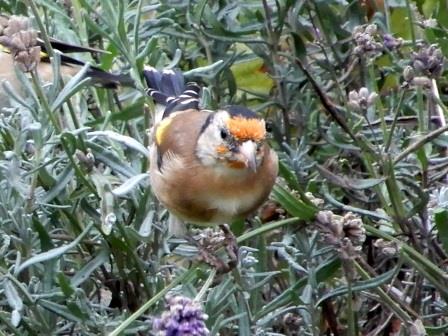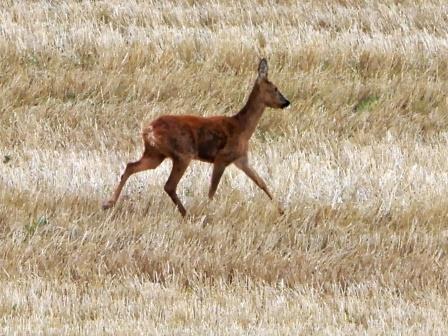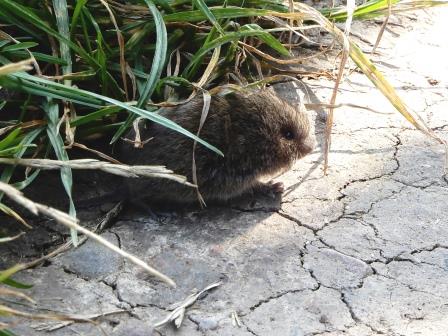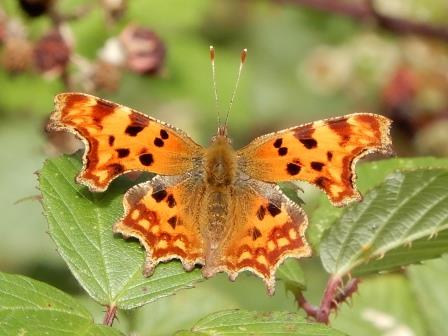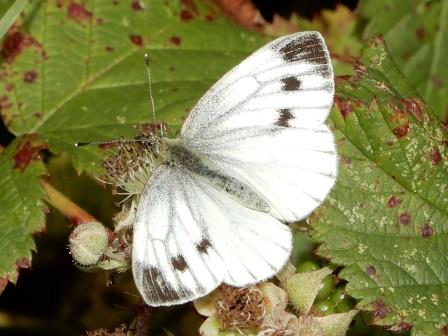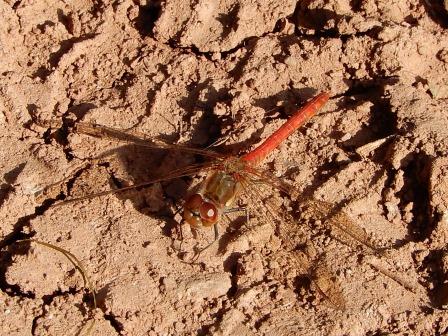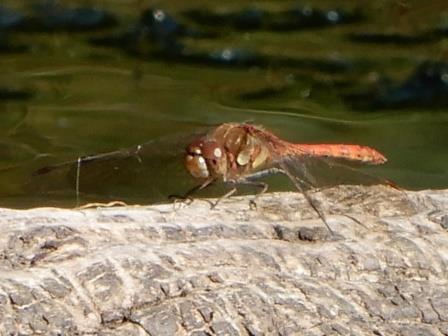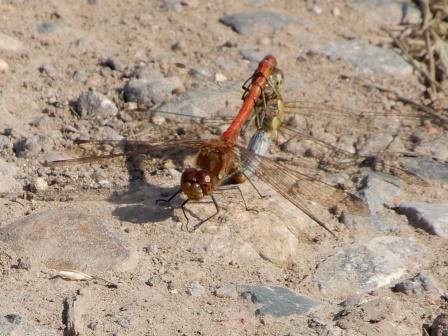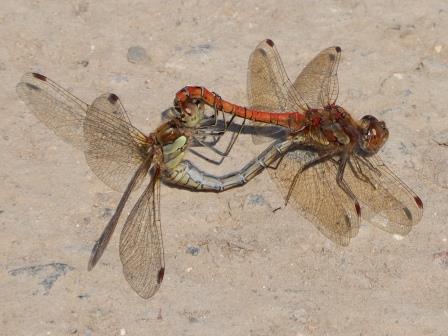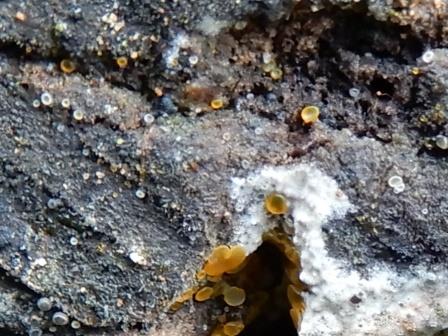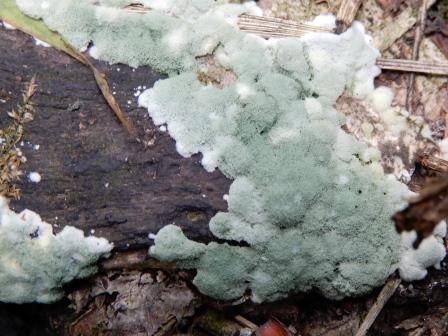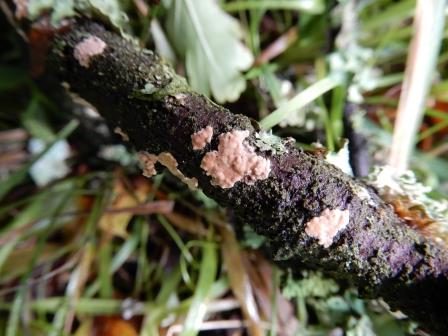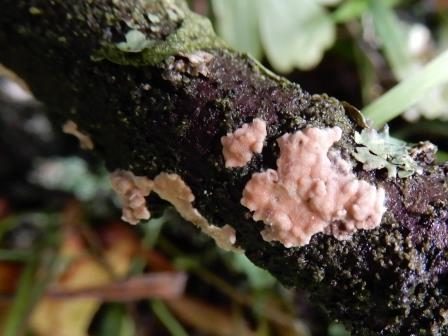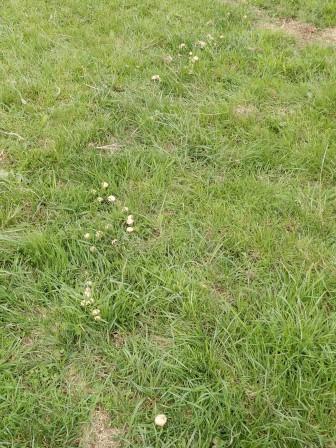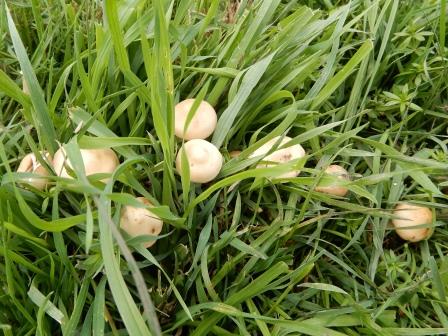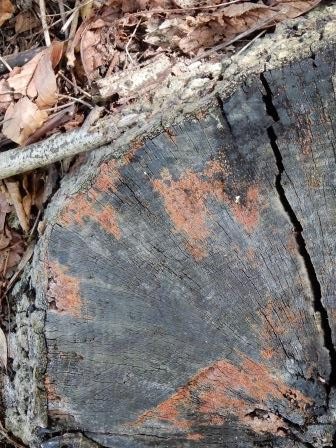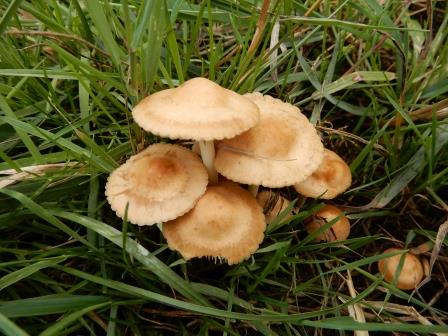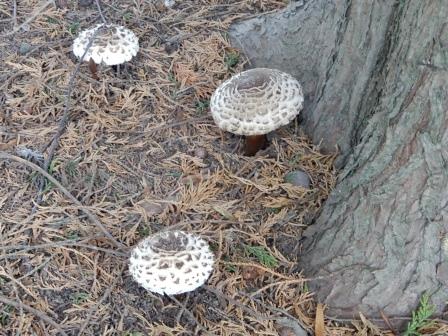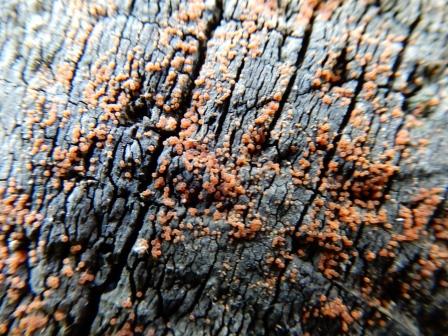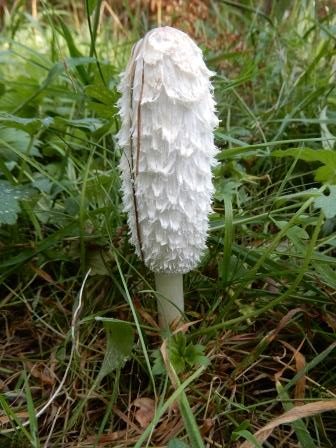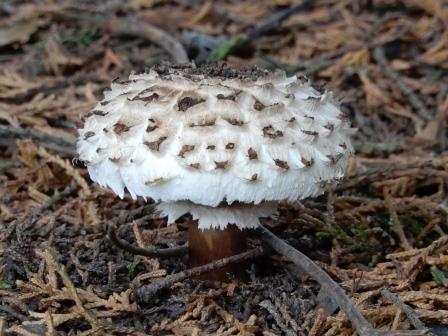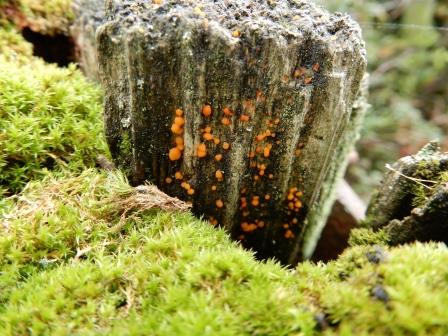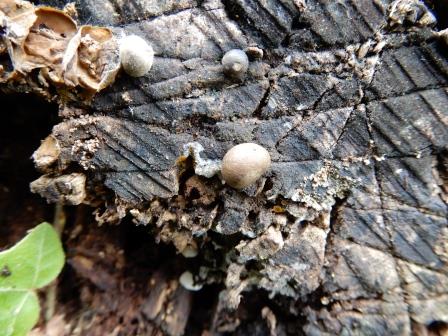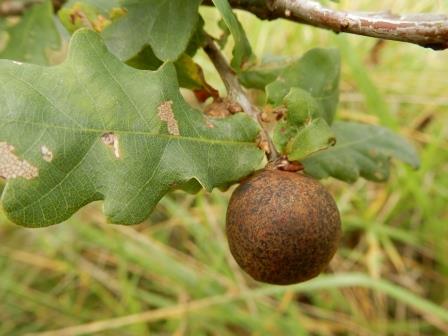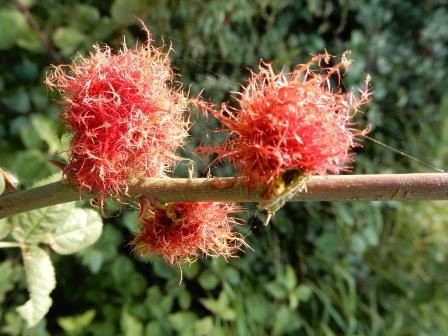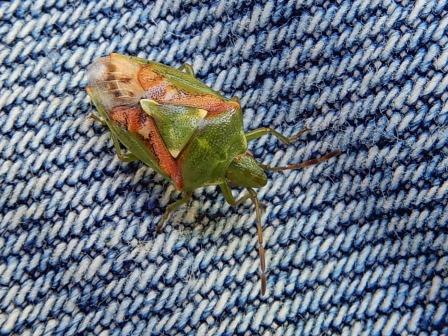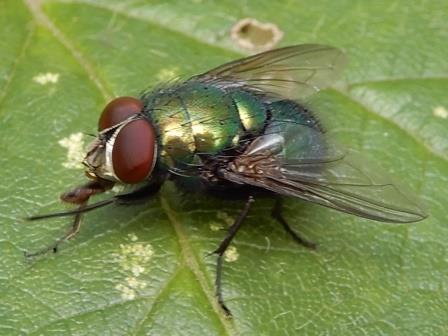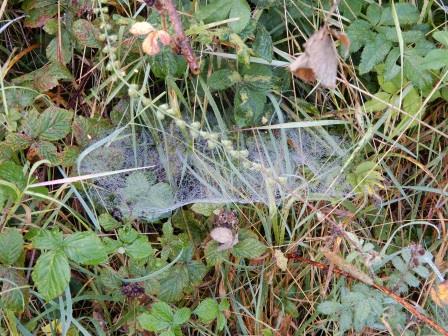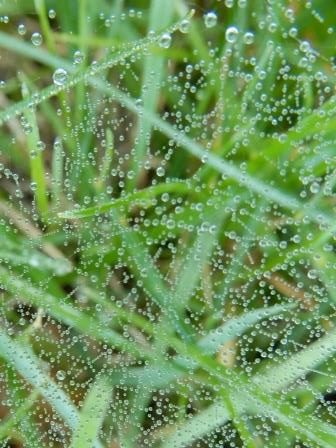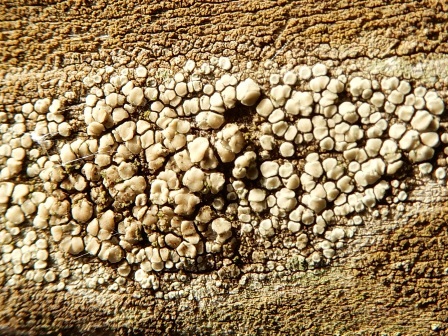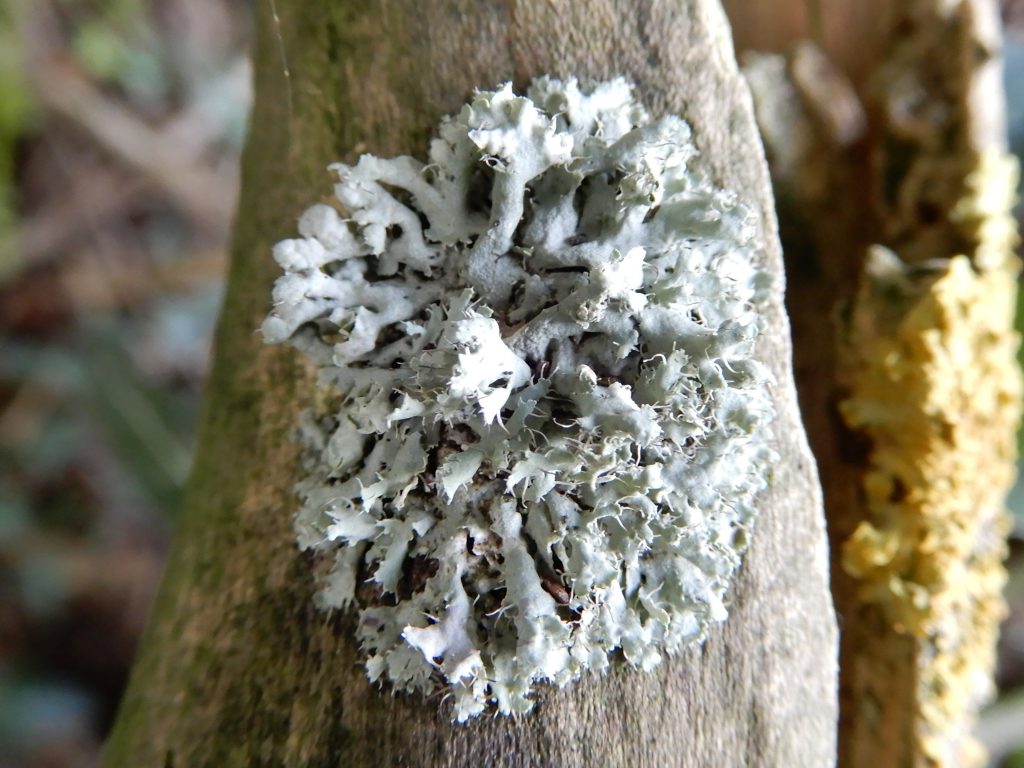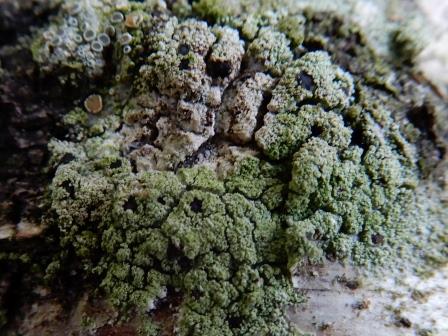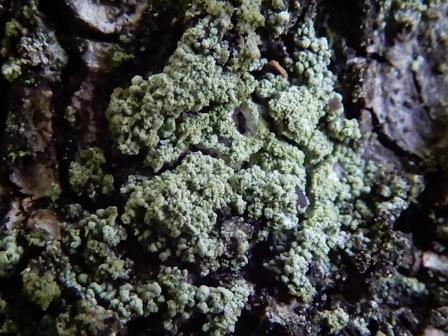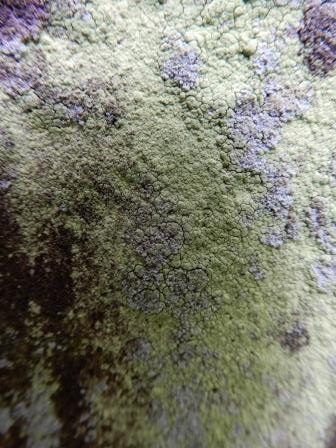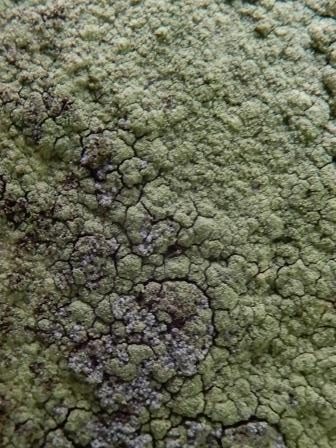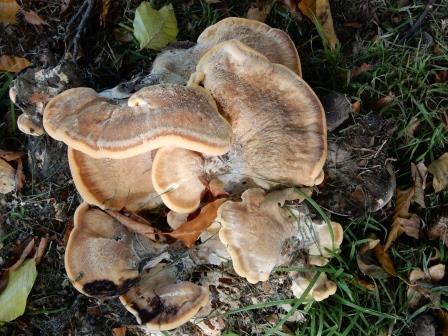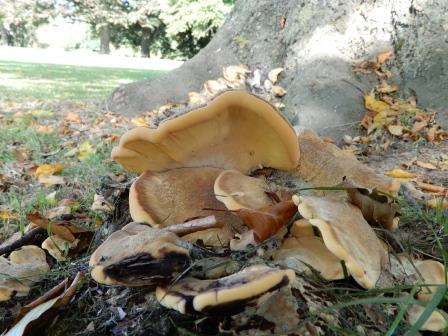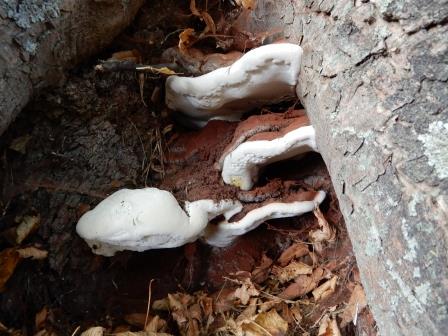Please refer to the Introduction Page to understand the context behind the monthly photographs.
Fungi
Slime Mould
While taking this photograph of these grey (a few day earlier orange) Lycogala epidendrum (Slime mould) I noticed a tiny splash of yellow near the white patch on the left hand side. The yellow cups are the Fungus Orbilia alnea and in the background are the tiny grey cups of the Fungus Mollisia cinerea. The former being about 2mm diameter and the later 1mm diameter. See photo on Fungi section above.
Slime moulds in fact do not form part of the fungal kingdom. The nearly 500 species form a group of organisms distinct from all other forms of life.
This link give a better idea of how Slime moulds function -https://youtu.be/GY_uMH8Xpy0
Insects
The Juniper Shield Bug's traditional foodplant is the Juniper tree with the larvae feeding on Juniper berries. It has also adapted to use Lawson Cypress trees. It was formerly scarce and restricted to southern Juniper woodlands but in recent years it has become common across southern and central England as a result of the widespread garden planting of Juniper and Cypress trees. Recent discoveries in northern England and Scotland suggest that the range of the species is extending. The Juniper Shield Bug overwinters as an adult, emerging to mate in the early spring with new adults found from late August onwards.
Lichen
Lichen are recorded at each new OS Grid location (hover for Grid Ref). They are then entered on the British Lichen Society spreadsheet and submitted for their Warwickshire VC38 Lichen database and Lichen mapping.
Non-Churchyard lichens
Ones that escaped the camera lens this month
a) Emperor Dragonfly Male once again.
